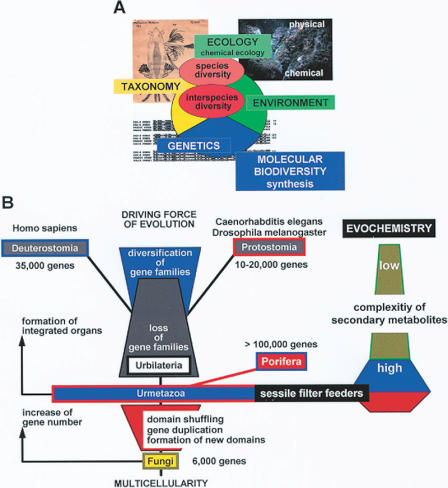Figure 9.
Evochemistry. (A) Effect of physical and chemical parameters as driving forces of the environment on the organismic world. The interactions between species/interspecies diversity and environment are studied by ecology and chemical ecology. Genetics explains the evolution of the organismic world and molecular biodiversity links taxonomy and genetics with ecology. (B) Proposed evolutionary processes proceed from Yeast to Urmetazoa and subsequently from this hypothetical ancestor of Metazoa to Deuterostomia [Homo sapiens] and Protostomia [Caenorhabditis elegans and in Drosophila melanogaster]. It is proposed that the number of genes calculated to be present in sponges and—very likely also in Urmetazoa—has been created by gene duplication. New domains have also been formed during this process, giving rise to novel mosaic proteins. In the metazoan phyla, derived from Urmetazoa, the number of genes decreased by elimination of gene families and the remaining gene families diversified in parallel. Based on the higher gene complexity in the lower metazoan phyla, their potency to synthesize a more complex spectrum of bioactive compounds also became possible. During their evolutionary history, bioactive secondary metabolites developed, and hence they are more potent and more specific [evochemical history of these compounds].

